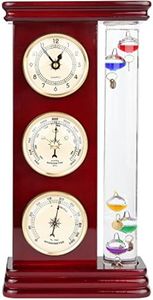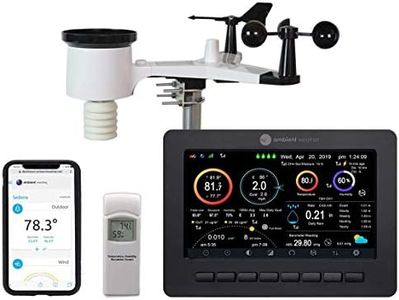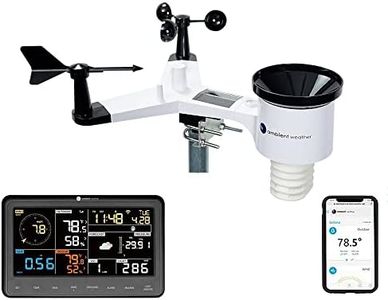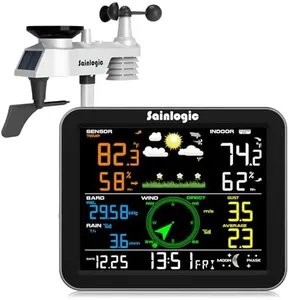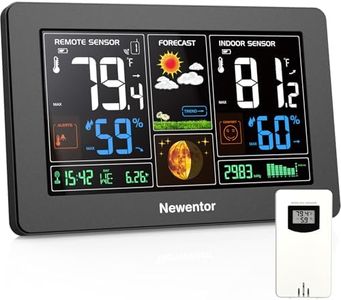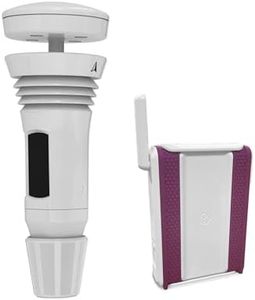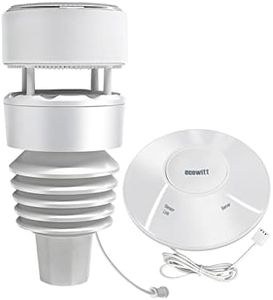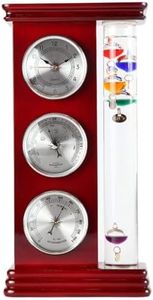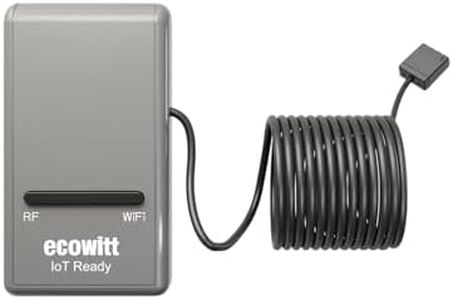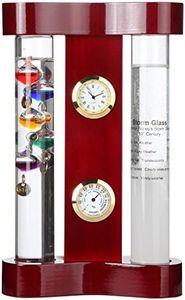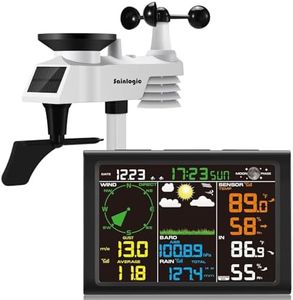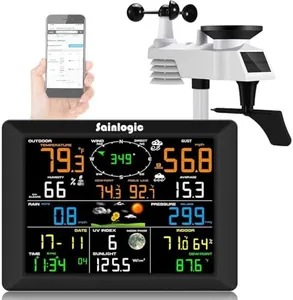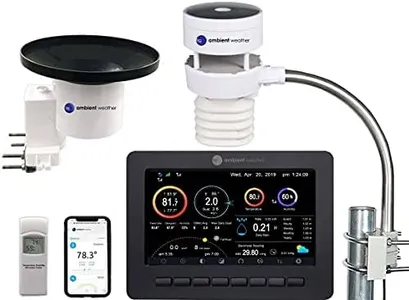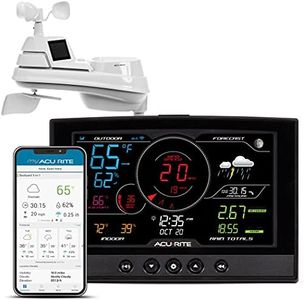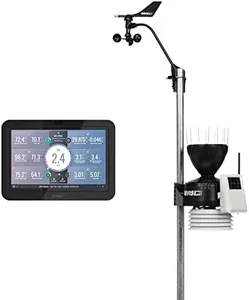10 Best Home Weather Stations 2025 in the United States
Our technology thoroughly searches through the online shopping world, reviewing hundreds of sites. We then process and analyze this information, updating in real-time to bring you the latest top-rated products. This way, you always get the best and most current options available.

Our Top Picks
Winner
Ambient Weather WS-2000 Smart Weather Station with WiFi Remote Monitoring and Alerts
Most important from
2637 reviews
The Ambient Weather WS-2000 Smart Weather Station is a comprehensive home weather monitoring system that offers several strengths. It comes with a TFT color display that allows easy monitoring of various weather conditions such as wind speed/direction, temperature, humidity, rainfall, UV, and solar radiation. The device provides accurate readings, and its wireless sensor array helps maintain a clutter-free setup. It supports both imperial and metric units and allows for calibration, which is useful for ensuring precise measurements over time.
The enhanced Wi-Fi connectivity is a standout feature, enabling users to transmit data to a global weather station network, which can be a great benefit for those who enjoy contributing to larger data pools or accessing their weather data remotely. The console is powered by a 5V DC adapter, while the sensor array requires 3 AAA batteries, which are not included, so you'll need to purchase those separately. The use of plastic material may raise some durability concerns, especially in harsh weather conditions.
Installation is fairly straightforward, but some users may need to invest additional time in calibrating the sensors to ensure optimal accuracy. The device is specifically recommended for garden use, but its comprehensive data collection makes it versatile for other personal weather monitoring needs. While the solar-powered feature is beneficial, the reliance on AAA batteries for the sensor array might be seen as a downside for those wishing for a fully self-sustaining system. This weather station is well-suited for users looking to monitor a wide range of weather conditions with the added benefit of remote data accessibility.
Most important from
2637 reviews
Ambient Weather WS-2902 WiFi Smart Weather Station
Most important from
12486 reviews
The Ambient Weather WS-2902 WiFi Smart Weather Station is a versatile option for those looking to monitor their home and backyard weather conditions. One of its standout features is the comprehensive sensor array, which accurately measures wind speed, temperature, humidity, rainfall, UV intensity, and solar radiation, giving users hyper-local data. The LCD color display is also easy to read, making it user-friendly for people of all ages.
In terms of connectivity, the WS-2902 is Wi-Fi enabled, allowing users to access data remotely and set up customizable alerts through smart home integrations with platforms like Google Home and Alexa. This makes it a great fit for tech-savvy users who enjoy having their weather data at their fingertips and want to incorporate this information into their smart home routines.
The weather station is designed to be durable and weather resistant, which is essential for outdoor use. Its solar-powered design helps with energy efficiency, although it does require three AAA batteries (not included) for optimal functioning, which could be a minor inconvenience for some users. There are some drawbacks to consider; while the enhanced Wi-Fi feature allows for data sharing with the Ambient Weather Network, it may be less appealing for users who prefer a more standalone device without additional online connections. Additionally, the installation may require some effort, particularly for those who aren't as handy with mounting equipment.
Most important from
12486 reviews
Sainlogic Weather Station Wireless Indoor Outdoor, Weather Station with Rain Gauge and Wind Speed/Direction, Temperature, Humidity, Air Pressure, Weather Forecast, Moon Phase, and Alarm, Black
Most important from
1361 reviews
The Sainlogic Weather Station offers a thorough and real-time monitoring of indoor and outdoor weather conditions. It covers essential metrics such as temperature, humidity, wind speed and direction, rainfall, and air pressure. This makes it a versatile tool for garden lovers or those interested in tracking weather patterns. The 5-in-1 outdoor sensor is comprehensive and includes a rain gauge, solar panel, wind vane, anemometer, and thermohygrometer with a radiation shield, ensuring accurate readings.
With a 328-ft range, the sensor can be placed flexibly in your yard or garden for optimal data collection. The 7.56-inch adjustable display is user-friendly with large fonts and adjustable backlighting, making the data easy to read even in low light conditions. Installation is straightforward with clear instructions, requiring only the addition of batteries (not included) and mounting the sensor using the provided bracket. This makes it accessible for users who prefer a no-fuss setup.
However, the need for frequent battery replacements (3 AAA batteries) might be a concern for some users who prefer a less maintenance-intensive option. Additionally, while the device's material, Acrylonitrile Butadiene Styrene (ABS), is durable, it may not hold up under extreme weather conditions long-term. The wireless connectivity is a plus, but the device lacks advanced connectivity options like Wi-Fi or app integration, which might limit remote monitoring capabilities. This weather station is best suited for home use, particularly in gardens or for hobbyist weather tracking, rather than professional meteorological use.
Most important from
1361 reviews
Buying Guide for the Best Home Weather Stations
Choosing the right home weather station can greatly enhance your ability to monitor and understand the weather conditions around your home. Whether you're a weather enthusiast, a gardener, or just someone who likes to stay informed, a home weather station can provide valuable data. To make the best choice, it's important to understand the key specifications and how they align with your needs.FAQ
Most Popular Categories Right Now
